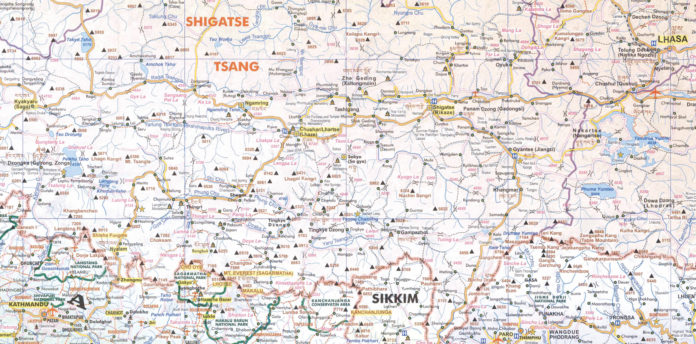China has begun the groundwork to lay the proposed strategic railway line connecting Lhasa to Kathmandu and finally to Lumbini close to the India-Nepal border. China has put out pictures of the exploration and surveys of the railway project. It showed a team carrying out some kind of a ground assessment at a site where the rail corridor is being planned. The railway line that is proposed to come till Lumbini, the birth place of a lord Buddha right on the India border, has not gained much pace since it was first planned in 2008. The next deadline for the ambitious project is 2025.
While the construction has not started, the survey is part of a pre-feasibility study for the project.
The plan was conceptualised by China in 2008 and it was decided that the railway corridor would connect Lhasa to Shigatse and would be extended to Keyrung on the Nepal border. This is to be further stretched to Kathmandu and Lumbini.
Cost has been a major concern with the entire project already hitting estimates of over $300 million. The project is complex with several tunnels and bridges required.
China plans to build a 540-kilometre strategic high-speed rail link between Tibet and Nepal passing through a tunnel under Mt Everest, a move that could raise alarm in India about the Communist giant’s growing influence in its neighbourhood.
ALSO READ The China Factor in Nepal
China is considering tunneling under Mount Everest to connect better with the South Asian markets. The extended rail line from the Tibet’s capital Lhasa to Kathmandu in Nepal, will reduce India’s influence in Nepal.
China had earlier discussed extending the Qinghai-Lhasa line to the Nepalese border without digging a tunnel.
The Lhasa line was extended to Xigaze, the second biggest city in Tibet, which is closer to the Nepalese border as Chinese authorities completed a 253-km long link railway line in August last year.
As with any engineering project of this size, it is not without its opponents. The International Campaign for Tibet cautions that there are “dangerous implications for regional security and the fragile ecosystem of the world’s highest and largest plateau.”
Restrained by rugged Himalayan mountains with its “remarkable” changes in elevation, trains on the line would probably have a maximum speed of 120 kmph.
The feat would provide China with more influence over India’s allies and neighbours as well as continue Beijing’s plan to open up the Buddhist plateau of Tibet to tourism and modern Chinese culture.
Basically, a rail line from mainland China under the Himalayas would connect the nation to the billion plus inhabitants living below “The Roof of the World”.
ALSO READ Chinese Media Threatens India With ‘Military Pressure’ from China, Pakistan or Nepal
Indian Railway Projects
To counter China’s influence through the proposed rail corridor, India has also planned railway links in Nepal. Six cross border railway lines have been proposed between India and Nepal till date.
Unlike the Nepal-China railway line that faces hurdles because of the terrain, the construction of railway lines between India and Nepal is less challenging. Two of these projects have had some progress.
The first is the Jayanagar-Janakpur-Bardibas railway line at a cost of Rs 5.5 billion. The 69 km project is divided in three phases. In the first phase, the 34-km segment between Jayanagar and Kurtha is complete. Work is in progress in the second phase which is 18 km from Kurtha to Bhangaha in Mahottari district and the third phase which is a 17 km segment from Bhangaha to Bardibas.
The second is the Kathmandu-Raxual railway line, which is 136 km-long and is proposed to be an electrified rail line connecting the border town in India of Raxaul to Nepal’s capital Kathmandu. The Indian team has already completed the pre-feasibility study of Kathmandu-Raxual railway line and both were in the process of holding consultations on preparing the Detailed Project Report of the railway line.
Comments
Prime Minister Narendra Modi has made efforts to bolster the nation’s regional pull, but the construction of a contiguous rail line between China and the Nepalese capitol Kathmandu would undermine his historical geographic advantage as early as 2020.
China has been scaling up its ties with Nepal much to the chagrin of India to stem the flow of Tibetans travelling through Nepal to meet the Dalai Lama in Dharamshala.
The idea is to find a short route to Nepal in order to access the vast Indian market in a short time. China may be trying to involve Nepal in its Bangladesh-China-India-Myanmar project because New Delhi has shown less enthusiasm for the BCIM project.


















